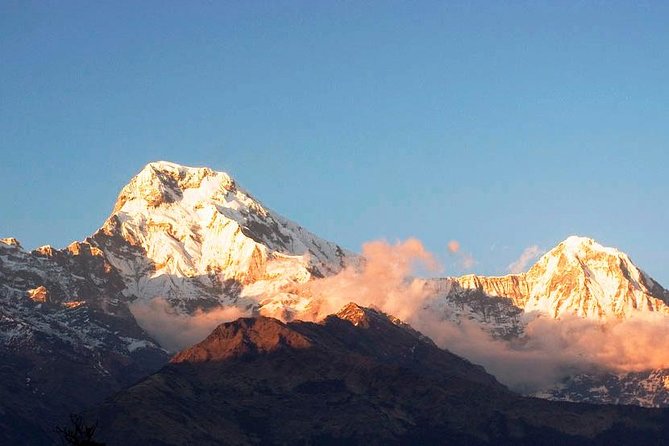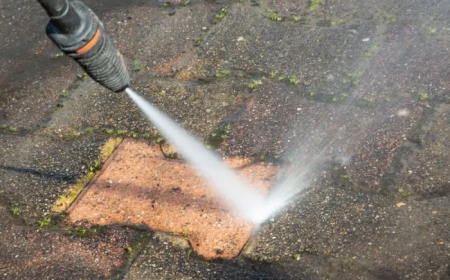These Tips Will Make Your Ghorepani Hike Unusually Memorable
Make your Ghorepani Poon Hill trek unforgettable with smart tips on catching the sunrise, staying warm, using trekking poles, connecting with locals, and soaking in stunning Himalayan views. A better trek starts with simple, thoughtful planning.

These Tips Will Make Your Ghorepani Hike Unusually Memorable
The Ghorepani Poon Hill Trek is a favorite among hikers in Nepal, and there are a few tips to make your experience even better. First, get on the trail early if you want to see the sunrise at Poon Hill. Arriving before dawn means you'll snag a great spot for the view and enjoy the calmness of the mountains waking up. Make sure to bring a headlamp and dress warmit can get pretty cold up there at 3,210 meters.
Next, take your time on the trail. Its not a super tough hike, but if you pace yourself, you can enjoy the beautiful rhododendron forests, charming villages, and maybe even spot some wildlife. Take breaks to catch your breath, drink some water, and snap photos. The nature and culture along the way are just as amazing as the views from the top.
Also, dont miss out on chatting with locals and other trekkers. The tea houses and lodges in Ghorepani and nearby areas serve delicious food and give you a chance to hear stories about life in the mountains. These conversations can make your trip feel more personal.
If you have trekking poles, bring them along. They help lessen the strain on your knees during the steep parts. And remember to take some cash with you, since ATMs arent available in these parts.
Finally, take care of the environment. Dont leave trash behind and stick to the marked paths. Keeping this beautiful area clean means future trekkers can enjoy it too.
With these simple tips, your trek in Ghorepani will be filled with unforgettable moments, from stunning sunrises to meaningful interactions, making it truly special.
Start Early to Catch the Sunrise at Poon Hill
Getting up early is key to catching the stunning sunrise from Poon Hill. Most hikers start the last stretch before dawn, usually around 4:30 or 5:00 AM, so they can get to the viewpoint in time. This way, youll grab a good spot before it gets crowded and can enjoy the calm before the sun shows up. The cool morning air adds to the experience. Watching the first rays of light hit the Annapurna and Dhaulagiri ranges makes the early wake-up worth it. Bring a headlamp or flashlight to safely find your way on the dark trail. Planning for this early start is a smart move to make your trek unforgettablenothing beats seeing the mountains come alive at dawn.
Pack Layers for Changing Mountain Weather
Mountain weather can change fast, especially in the Annapurna region, so packing layers is important. Early mornings and evenings can get pretty cold, especially up at Poon Hill (3,210 meters). During the day, the sun warms things up quickly, so its best to have breathable base layers and warmer mid-layers like fleece or down jackets. A waterproof jacket helps when the weather turns. Layers let you adjust what you wear for comfort and safety. Dont forget a warm hat and gloves for the chilly early mornings and evenings. Being well-prepared with layers helps you stay comfy and enjoy the trek without any weather surprises.
Use Trekking Poles for Steep Sections
Trekking poles are super helpful on the Ghorepani trail, especially on those steep up and down parts. They give you extra balance and reduce stress on your knees and ankles, which helps keep fatigue and injuries at bay during long hikes. Poles are great when youre climbing stone steps or dealing with slippery paths. They help you keep your balance and feel more secure on uneven ground. Plus, they help spread the work out between your arms and legs, so you can maintain a steady pace and save energy. Lightweight, adjustable trekking poles are easy to carry and stash away when you dont need them. Whether youre a newbie or an experienced hiker, using poles makes the trek easier and more enjoyable, especially on the tough parts to Ghorepani and Poon Hill.
Stay Hydrated and Snack Often
Staying hydrated and fueled is crucial to keep your energy up on the Ghorepani trek. The mountain air is dry, and trekking at high altitude makes your body need more water, so make sure youre drinking plenty throughout the day. Carry a refillable water bottle or hydration pack, and use purification tablets or filters when you refill from natural water sources. Snacking often on things like nuts, energy bars, or fruit helps keep your energy steady and stops fatigue. Tea houses along the way offer simple meals, but bringing your snacks can be helpful too. Keeping hydrated and snacking regularly boosts your endurance, helps with acclimatization, and keeps your spirits up, all of which make the trek more enjoyable.
Respect Local Culture and Customs
Trekking in the Annapurna region means youre in the home turf of the Gurung and Magar people, who have rich customs and hospitality. Being respectful of their culture is important for a great experience. Greet locals politely, learn a few basic Nepali greetings, and dress modestly when visiting villages. Always ask before taking photos of people or their homes. Supporting local businesses by eating in tea houses and buying handmade crafts helps the community. Learn about any local festivals or traditions happening during your trekit makes your experience even richer. Being respectful helps you connect with locals and deepens your appreciation for their way of life.
Take Time to Explore Rhododendron Forests
The Ghorepani trail goes through colorful rhododendron forests, especially beautiful in spring when the flowers bloom and brighten up the mountainsides. Taking time to explore these woods adds to your trekking experience. Walk slowly to take in the variety of plants and animalsthe vibrant flowers, colorful birds, and fresh mountain air stand out. The shady paths offer a nice break from the sun. Take a moment to listen to nature and soak in the peaceful vibe. These forests not only provide beautiful photo ops but also connect you to the regions rich biodiversity. Exploring the rhododendron areas makes the trek a feast for the senses alongside the physical adventure.
Choose Guesthouses with Rooftop Views
Staying at guesthouses with rooftop terraces or balconies in Ghorepani or nearby villages gives a special touch to your trek. These places often have great views of the Himalayas, letting you enjoy sunrises, sunsets, or starry nights comfortably. After a long day hiking, relaxing on a roof with a hot drink while watching the mountains glow is so rewarding. Rooftop guesthouses are also great social spots where trekkers can share stories. When booking, look for places with reviews mentioning good views. This simple choice really enhances your experience, turning regular lodging into precious memories with stunning mountain views.
Capture Photos at Golden Hour
The golden hour, right after sunrise or before sunset, brings a beautiful, warm light that turns the Himalayan landscape into a photographer's paradise. The soft sunlight highlights the textures and colors, making the snow-capped peaks, forests, and valleys shine with warm oranges, pinks, and golds. Planning your photos around golden hours during the Poon Hill trek helps you capture the areas true beauty. Early mornings are quieter, giving you the chance for peaceful shots. Whether youre using a smartphone or a camera, taking advantage of this natural light makes your pictures memorable. Taking time to capture these moments helps you remember the treks beauty long after youre back home.
Engage with Fellow Trekkers and Locals
One of the best parts of the Ghorepani trek is the chance to meet so many people along the way. Connecting with fellow hikers opens up opportunities for shared stories, tips, and even new friendships. Conversations often happen around campfires, in tea houses, or during breaks, turning strangers into buddies on a shared journey. Equally important is getting to know local folkslearning about their culture and everyday lives adds richness to your trek. Simple things like sharing a meal, greeting them, or even helping with translations create warmth and respect. These interactions make your trek so much more meaningful, creating lasting memories and connections.
Slow Down and Soak in the Surroundings
In the rush to reach Poon Hills top, its easy to miss the beauty all around you. Slowing down helps you appreciate the scenerythe patterns of terraced fields, the sound of leaves rustling in the rhododendron forests, and the distant shape of the Himalayan peaks. Taking breaks to breathe deeply, listen to birds, or watch villagers going about their day strengthens your tie to the surroundings. This mindful approach not only reduces tiredness but also makes your adventure safer and more meaningful. By soaking in every detail, the trek becomes just as important as reaching the summit, turning the Ghorepani trek into a truly special adventure for both your body and your spirit.
What to do in Ghorepani?
Ghorepani is a lovely mountain village thats a great starting point for treks to Poon Hill. You can soak in the local Gurung culture, chat with villagers, and enjoy the warm welcome at cozy tea houses. The highlight is the early morning hike to Poon Hill to catch some amazing sunrise views over the Annapurna and Dhaulagiri mountains. During the day, you can wander around the village, pop into local shops, and chill out in the beautiful rhododendron forests, especially stunning in the spring. Ghorepani also has rooftop spots that are perfect for photos and some quiet time. It really offers a true taste of Nepals mountain life along with great natural scenery.
What is the history of Ghorepani?
Ghorepani has a rich history as a trading post and a pit stop for mule caravans. Ghore means horse, and pani means water in Nepali. It used to be an important stop for traders and travelers passing through the Annapurna region, offering water and rest for both people and animals. Over the years, Ghorepani turned into a trekking hotspot thanks to its great views from Poon Hill. Its still a cultural hub for the Gurung people, keeping their traditions and architecture alive. The villages history is all about the mix of trade, culture, and stunning nature that continues to draw trekkers from around the globe.
How many steps to Ghorepani?
Getting to Ghorepani from the closest trailheads involves a fair amount of stone steps, especially between Tikhedhunga and Ulleri, where youll climb around 3,000 steps. These steep stairs can be tough and test your endurance and balance. While the exact number of steps can change depending on the route, they are a well-known challenge for trekkers and are part of why the trek is rated as moderate. Taking your time and using trekking poles can help you tackle this tough part.
What is the difficulty level of the Ghorepani Poon Hill trek?
The Poon Hill Ghorepani Trek is mostly moderate. Youll encounter some steep stone staircases, particularly between Tikhedhunga, Ulleri, and Ghorepani, so being in decent shape helps. Still, its doable for most folks who have basic trekking experience and a good amount of stamina. The altitude isnt too extreme, with Poon Hill sitting at about 3,210 meters (10,531 feet), so youll want to take it easy to adjust, but its usually manageable. The trail is well-marked, and there are plenty of tea houses along the way for breaks, making it a good option for beginners willing to work a bit.































